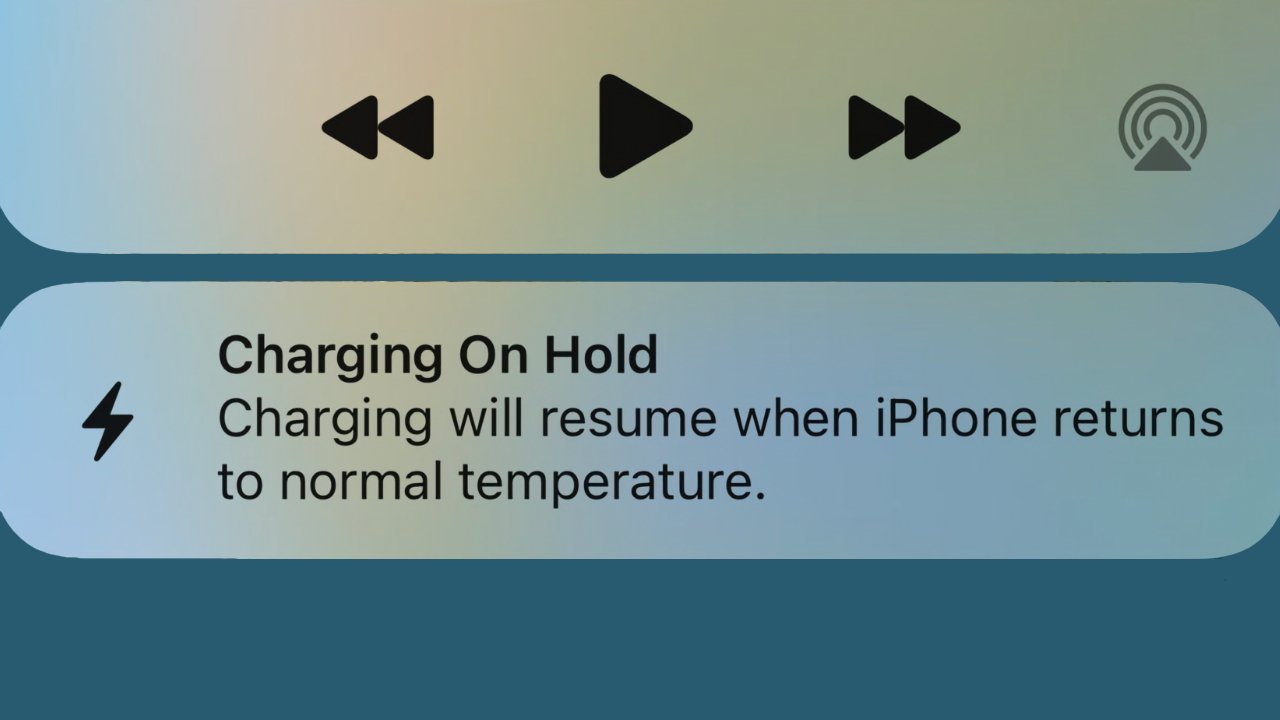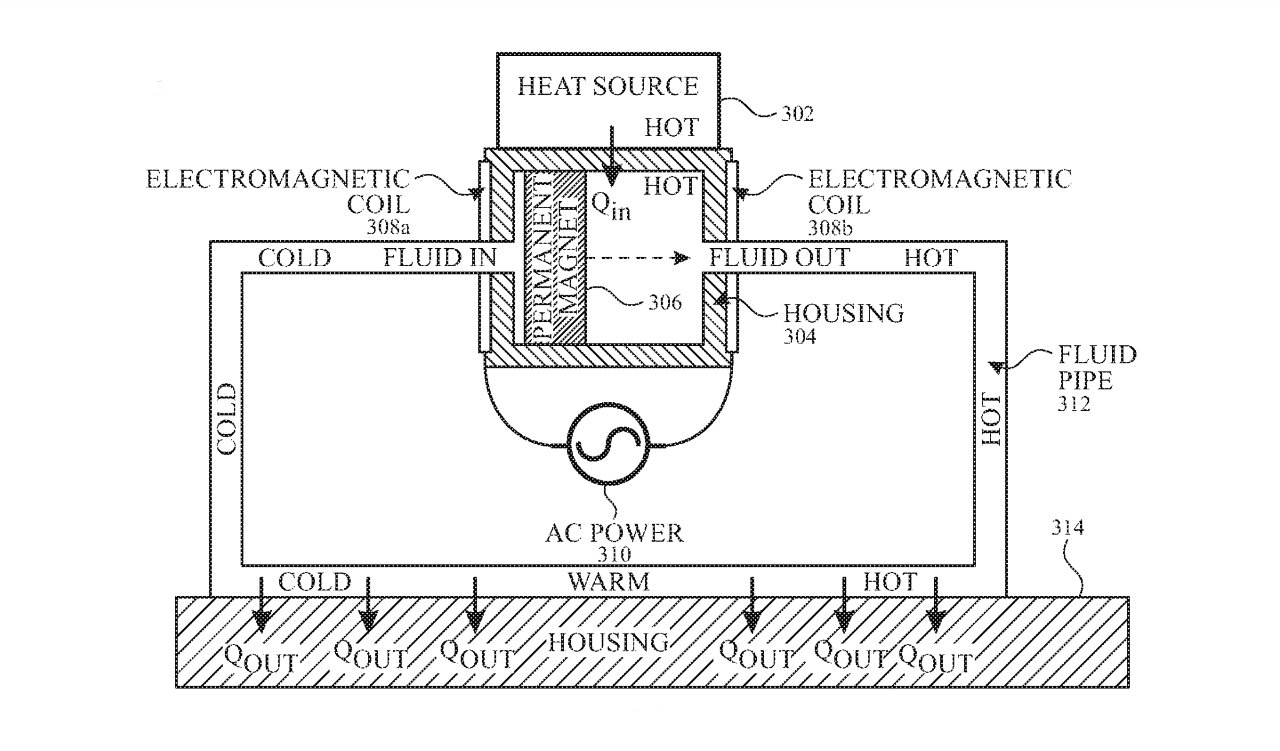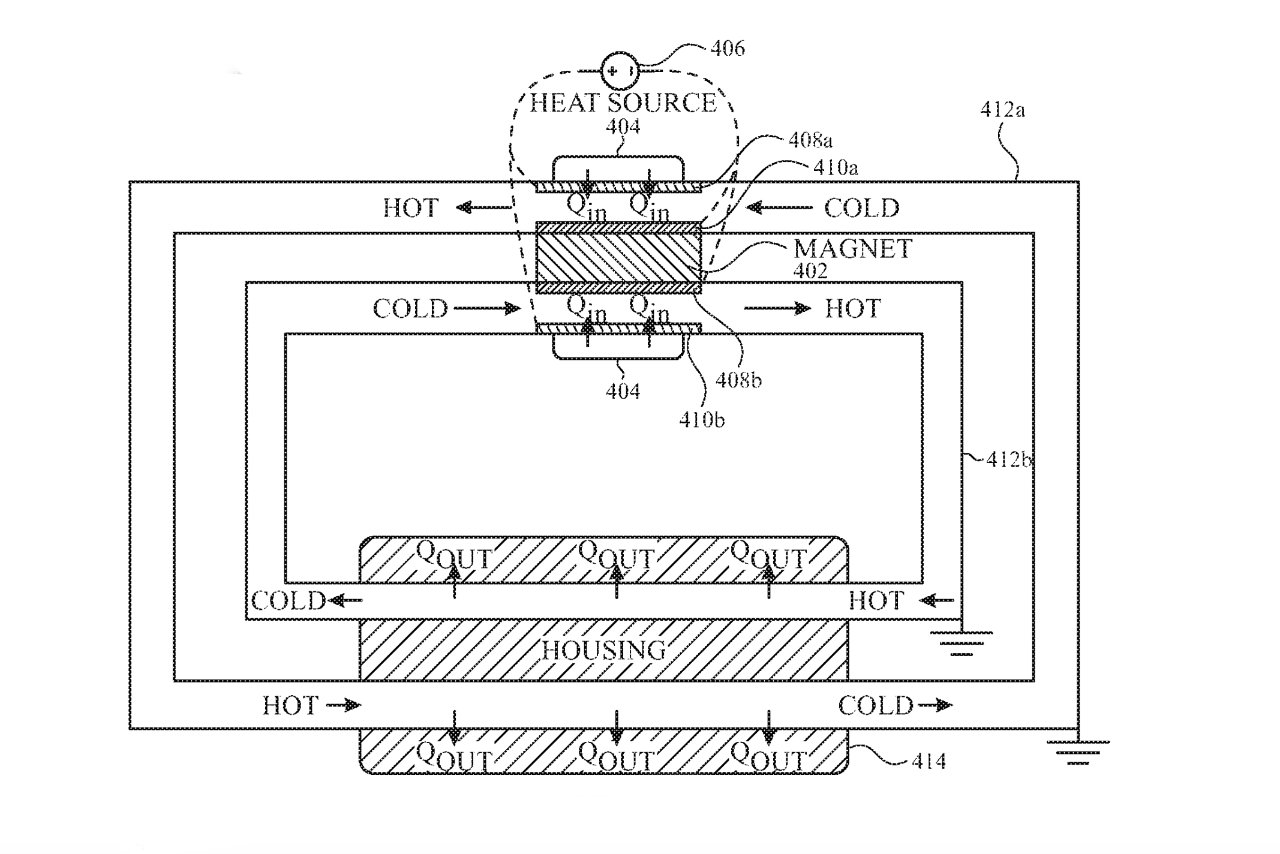Future iPhones and iPads could come with a new cooling system that uses magnets to circulate fluids and transfer heat.
If your state allows it and you’ve put an iPhone on a car mount in your window, you’ve that phone shut down from overheating. The heat of the sun through the glass is one thing, but also navigating means that iPhone is constantly working to get get new data and display it.
That’s just how it is with electronics, they get hot and if the components are packed closely together, you have to live with the fact that your iPhone is going to get warm. Unless you’re Apple, in which case you can set an inventor working on a way to help.
Newly-granted patent “Liquid Heat Exchanger For Electronic Device,” is the result. It proposes a system whereby if a device can’t be run any cooler, its heat can at least be transferred away before components get damaged.
“In some examples, a system can include an electronic device and a cooling system that transfers heat among other components of the system,” says Apple. “The cooling system can include a pipe that contains a fluid, for example.”
“[Or] the cooling system can further include a magnetic piston, one or more electromagnetic coils, and a power supply,” it continues. “The electromagnetic coils and power supply can generate a magnetic field that moves the piston to cause the fluid to circulate in the fluid pipe.”
When Apple’s patent talks about pipes and pistons, power supplies and electromagnetic coils, it’s easy to assume it’s describing large-scale devices like factory machinery. But where the patent does not detail sizes, and is more about the theory of the proposal than the practice, it does explicitly say what devices it’s meant for.
Its illustrations depict everything Apple makes, from a Mac, to an Apple Watch, by way of an iPhone, an iPad — and even an iPod. It doesn’t make a direct reference to Apple Vision Pro, but that is another device that needs cooling.
These are all quite small devices and it’s because of their size that there are many reasons to keep them cool.
“Reducing the temperature of the heat-generating component can improve the user experience,” says Apple, “prevent injury to a user, prevent damage to components and promote longevity of the electronic device.”
Many devices do already include fans and Apple’s new proposal doesn’t try to downplay their advantages. “Moreover… fans can have a compact design that does not add an unacceptable amount of bulk to the electronic device (e.g., less than a threshold weight/size) and can be designed to achieve sufficient cooling (e.g., a threshold amount of heat exchange/dissipation) without requiring an unacceptable amount of power (e.g., less than a threshold amount power consumption).”
“However, in some examples, fans can be undesirable due to the noise and vibration that they generate,” it continues, “especially for electronic devices such as mobile devices and wearable devices that can be used in close proximity to the user.”
So what is desired, and what Apple proposes, is a “cooling system that provides sufficient cooling with acceptable size and power requirements that does not generate the noise and vibration generated by a fan.”
Without ruling out other possibilities, Apple’s new proposal zeroes in on how “in some examples, liquid heat exchanger techniques disclosed herein can achieve these objectives.”
Thereafter the patent describes multiple variations on the concept that a system with a magnet, electrodes, and power supply can generate a Lorentz force that causes a conductive fluid to circulate in the fluid pipe.”
A charged particle in an electric field will move because of the force induced by the magnets in the patent. Presumably, the magnets used are electromagnets, and it’s not clear from the patent what kind of power demand this will require to move even a small body of liquid for this cooling to work.
So rather than noisy and bulky systems like fans, an “electromagnetic coil [can be] configured to generate an alternating magnetic field,” which can then in theory “cause movement of the fluid in alternating directions in the fluid pipe.”
The heat still has to go somewhere, but it can be kept away from the user’s head, for instance, or for vital components.
This patent is credited to inventor Xiaoyi Huang.
This story originally appeared on Appleinsider



